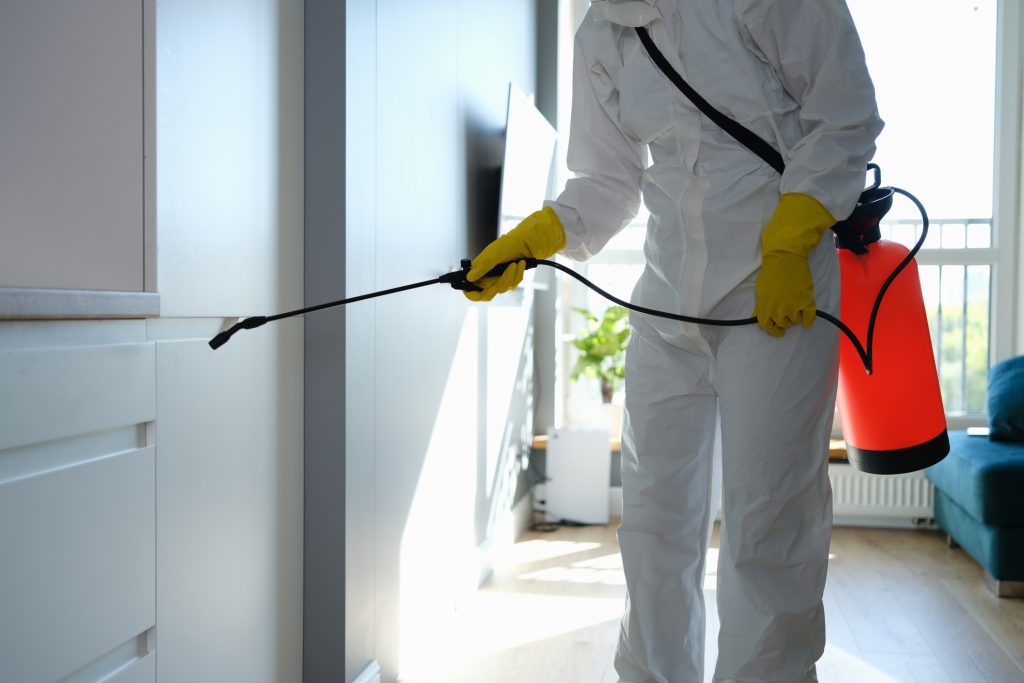Top-rated Pest Control to ensure your property is clean and pest-free.
Eco-Friendly Insect Control Approaches for Handling Wild Animals in Urban Areas
Urban locations commonly discover themselves at the intersection of human activity and wildlife, causing one-of-a-kind difficulties in pest administration. Environment-friendly techniques stress sustainable conjunction, employing strategies such as habitat modification and all-natural repellents to minimize human-wildlife disputes. These approaches not only shield the atmosphere yet also enhance area interaction in wild animals monitoring. As urban populaces proceed to expand, understanding the dynamics of wild animals interactions becomes significantly critical. What innovative methods can be applied to make certain both environmental balance and urban security? Exploring this question reveals a compelling landscape of possible options.
Recognizing Urban Wild Animals Dynamics
Comprehending Urban Wildlife Characteristics is important for creating efficient and eco-friendly bug control techniques. Urban areas are significantly becoming environments for various wild animals types, driven by factors such as environment fragmentation, food schedule, and human infringement. Recognizing these characteristics permits a nuanced method to pest management that lines up with environmental concepts.
Urban wildlife frequently includes species such as raccoons, squirrels, and birds, which adjust to city atmospheres, discovering specific niches in eco-friendly spaces, parks, and even suburbs. Their presence can result in disputes with humans, particularly when they manipulate human resources for food and sanctuary. Understanding the behaviors and environmental roles of these varieties notifies strategies that reduce adverse interactions while promoting biodiversity.
Moreover, recognizing the interdependencies within city ecosystems helps in identifying essential locations for environment conservation and remediation. This understanding adds to the advancement of incorporated pest management (IPM) techniques that take into consideration the eco-friendly equilibrium, thereby reducing reliance on hazardous chemicals. By cultivating conjunction between humans and urban wildlife, cities can develop much healthier atmospheres that profit both locals and local communities, paving the method for lasting city living.
All-natural Repellents and Deterrents
All-natural repellents and deterrents offer a sustainable option to standard parasite control techniques by using the power of nature to maintain unwanted species at bay. These environmentally friendly options usually use plant-based ingredients, crucial oils, and various other naturally taking place materials that discourage bugs without damaging the setting.
One efficient all-natural repellent is peppermint oil, which is known to drive away rodents and bugs. Its solid scent is undesirable to numerous parasites, making it a popular choice for urban settings. In a similar way, vinegar and citrus peels can offer as deterrents, as their solid odors are generally unattractive to different wildlife.
In addition, diatomaceous planet is an all-natural powder that can be spread in locations susceptible to bug activity, efficiently dehydrating and discouraging insects without presenting dangers to non-target types. Garlic sprays and neem oil are acknowledged for their capacity to drive away a wide array of insects, including both insects and larger wildlife.
Carrying out these all-natural repellents not just lowers reliance on chemical pesticides however also advertises a healthier metropolitan community, fostering an extra balanced coexistence in between human beings and wild animals. By making use of these methods, urban areas can efficiently manage bug populaces while minimizing environmental impact.
Habitat Modification Methods
Effective environment alteration methods play a critical function in sustainable insect administration by changing the atmosphere to make it less for pest invasions. By recognizing the environmental dynamics of city areas, homeowner can carry out tactical modifications that prevent parasites while advertising biodiversity.
(Earwig control Port Charlotte)One key technique includes keeping proper sanitation. This includes normal waste elimination, safeguarding garbage can, and getting rid of standing water to reduce reproducing sites for bugs and rodents. In addition, landscape design techniques such as selecting indigenous plants can boost ecological balance, giving environments for helpful organisms while lessening resources for parasites.
An additional crucial strategy is to secure entrance factors in buildings. Evaluating and fixing fractures in structures, walls, and home windows can considerably decrease insect gain access to. Additionally, producing physical obstacles, such as fencings or plant buffers, can inhibit wild animals activity right into human-inhabited areas.
Integrated Insect Administration Practices
Building upon environment alteration strategies, incorporated pest management (IPM) practices use an alternative method to controlling parasite populaces while reducing ecological influence. IPM incorporates various techniques, including organic, cultural, mechanical, and chemical controls, to attain efficient parasite management.
Organic control involves the intro of all-natural killers or bloodsuckers to reduce parasite populaces. Cultural methods, such as plant rotation and sanitation, disrupt pest life cycles and diminish their habitats - Pest control service. Mechanical controls, like catches and barriers, supply immediate alleviation from bug stress without chemical intervention
Chemical controls are made use of as a last option, concentrating on targeted applications that limit damage to non-target species and the setting. The choice of eco pleasant chemicals, when necessary, is indispensable to the IPM structure. Furthermore, checking insect populaces and examining prospective damage helps inform decision-making, making certain that interventions are timely and reliable.
Area Involvement and Education

(Tentless Termite Treatment)Workshops and informative sessions can furnish locals with understanding about native species, habitat conservation, and effective safe parasite monitoring methods. Partnership with colleges, neighborhood companies, and government agencies even more boosts instructional outreach, making sure that essential info reaches varied audiences.
Furthermore, community-led campaigns, such as area clean-up days and habitat reconstruction projects, not just advertise biodiversity yet additionally strengthen community ties. Pest control service. By motivating residents to share their experiences and observations, communities can create targeted strategies that attend to specific neighborhood parasite issues
Including comments from homeowners right into insect administration intends makes it possible for a more responsive and adaptive method to wildlife obstacles. Inevitably, notified and engaged communities are crucial to attaining long-term success in environment-friendly insect control, resulting in much healthier urban settings that value both human and ecological needs.

Final Thought
In final thought, green bug control comes close to deal lasting remedies for handling city wildlife. By focusing on habitat alteration, making use of natural repellents, and applying incorporated insect monitoring techniques, areas can foster a harmonious coexistence with neighborhood animals.